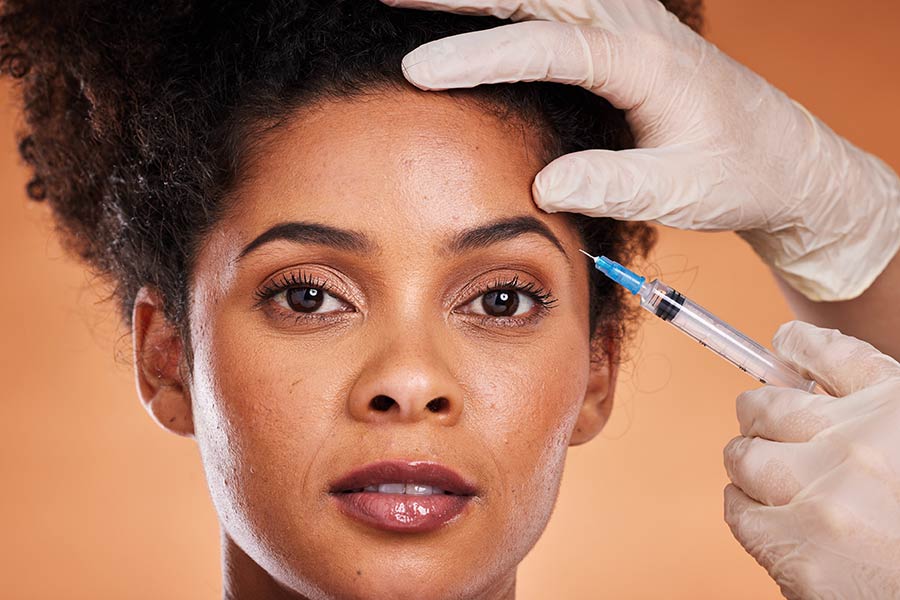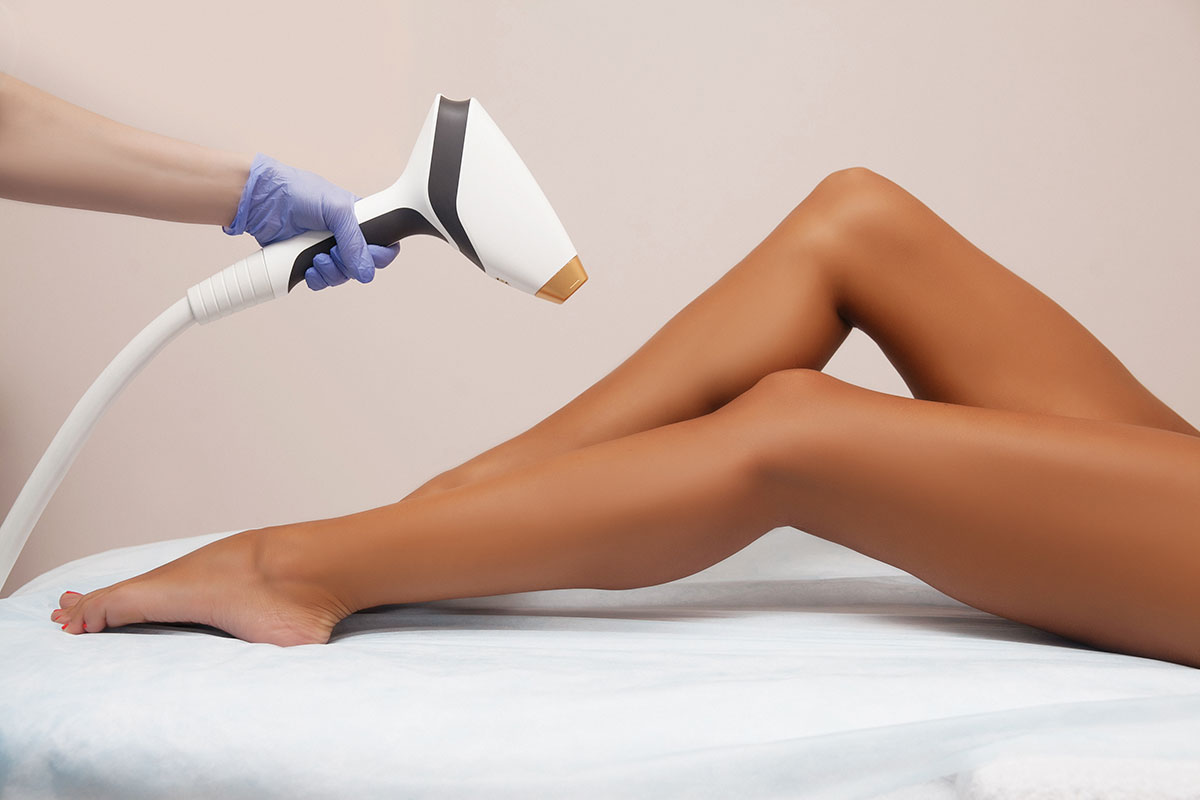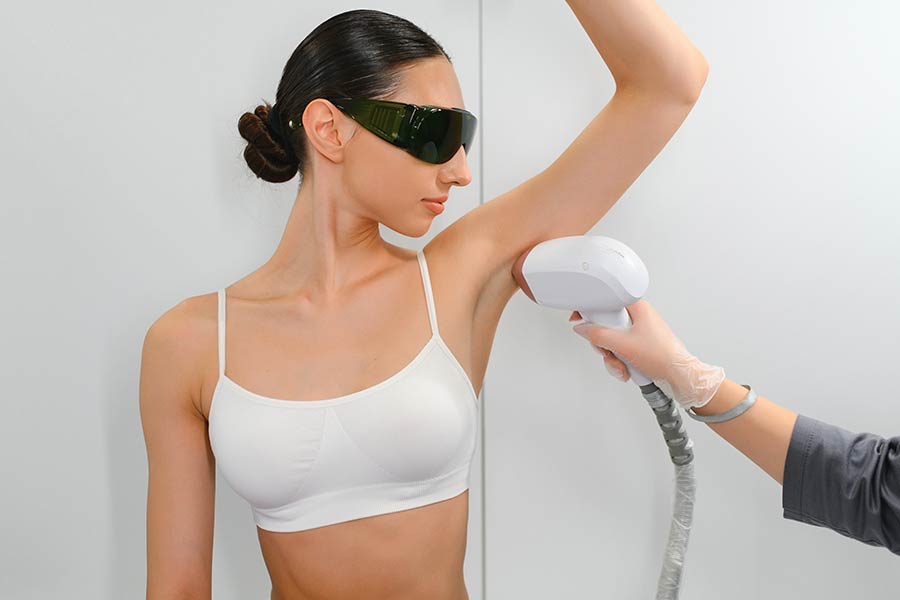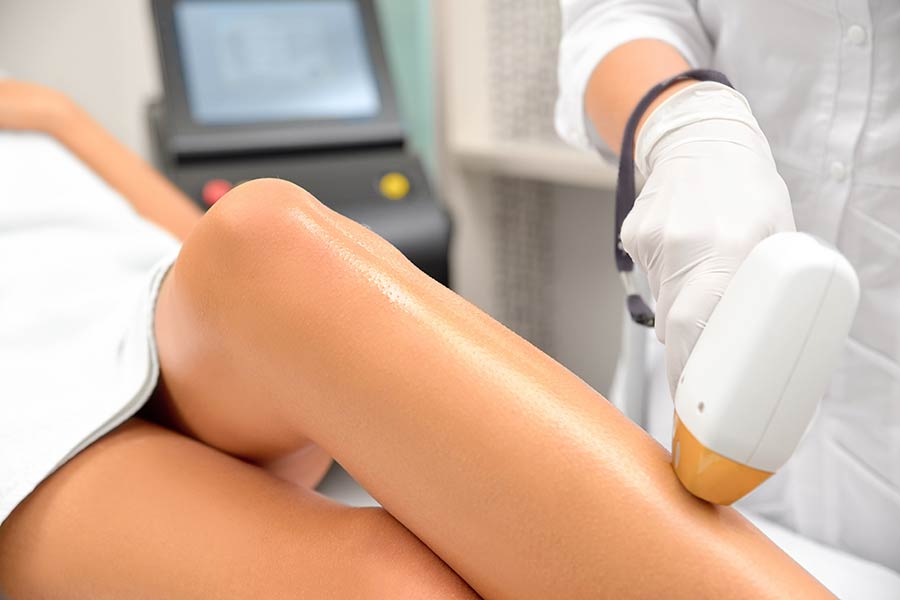Dermal fillers for acne scars offer a revolutionary solution, contrasting sharply with traditional treatments that often require lengthy recovery times and may not always deliver desired results. This innovative approach provides immediate improvements, targeting the very texture of your skin to reduce the appearance of scars and enhance your complexion. Unlike the slow and uncertain outcomes of creams or serums, dermal fillers bring forth a visible transformation, offering a beacon of hope for those who have long battled with the confidence-diminishing effects of acne scars. With expertise in application and the latest in skincare technology, this method stands out as a direct route to smoother, more radiant skin.
Key Takeaways
- Dermal fillers can be an effective treatment for certain types of acne scars, offering a way to smooth out the skin and improve appearance.
- It's important to understand the different types of acne scars to choose the most appropriate filler option, as some fillers work better for specific scar types.
- The procedure for applying dermal fillers is relatively quick and non-invasive, but knowing what it entails can help set realistic expectations.
- Being aware of potential side effects and discussing them with a healthcare provider before undergoing treatment ensures you're prepared for any risks.
- Recovery from dermal filler treatments is usually swift, with many people seeing immediate results, though understanding the expected outcomes and timeline helps manage expectations.
- Considering the cost and comparing it to the value and longevity of the results, as well as exploring alternatives, enables making an informed decision that aligns with personal needs and budget.
Understanding Dermal Fillers
How Fillers Work
Dermal fillers work by boosting collagen production in the skin. This process helps smooth out the skin's surface. They add volume beneath the skin. This lifts and reduces the appearance of scars. Fillers also promote skin regeneration. They improve the texture over time.
Types of Scars Treated
Fillers can treat various types of acne scars. These include ice pick, boxcar, and rolling scars. They are most effective on atrophic or depressed scars. Deep scars may need more than one type of treatment.
Filler Varieties
There are main types of fillers used for acne scars: hyaluronic acid, poly-L-lactic acid, and fat grafting. Each works differently and serves specific uses. Choosing the right filler is key for treating different scar types.
Hyaluronic acid fillers add moisture to the skin, plumping it up quickly. Poly-L-lactic acid fillers stimulate the body to produce its own collagen over time. Fat grafting involves using a person’s own fat to fill in depressed areas.
Mechanism of Action
Fillers stimulate collagen production deep within the skin. The injection process adds immediate volume and starts a gradual improvement in skin quality. Over time, this alters the skin's structure, making scars less visible.
Types of Acne Scars
Depressed Scars
Dermal fillers bring hope to those with depressed acne scars. They work by elevating the scar floor. This action makes the skin surface more even and less pitted. The results from fillers in treating these types of scars can last for about 6 to 18 months. However, achieving the best look might require more than one visit to the doctor.
Patients often need multiple sessions for optimal results. Each session builds on the progress of the last, gradually filling in the scar's depression. It's a process that demands patience but can significantly improve the skin's appearance.
Raised Scars
Raised scars pose a different challenge. Fillers are not primarily used for these types of scars since they protrude above the skin surface. Instead, treatments like laser therapy or corticosteroid injections are often recommended. Despite this, fillers can still play a role in improving the overall contour of the skin around raised scars.
A tailored treatment plan is crucial, especially for those with mixed types of scars. For individuals with both raised and depressed scars, combining fillers with other treatments can offer comprehensive improvements. This approach ensures that each scar type is addressed appropriately, leading to better skin texture and appearance.
Filler Options for Acne Scars
Hyaluronic Acid
Hyaluronic acid fillers are a popular choice for those new to dermal fillers. They offer a temporary solution that is easily reversible, making them ideal for first-time users. Patients can see immediate results after treatment, which is a big plus. There's also minimal downtime involved, allowing individuals to return to their daily activities quickly.
These fillers have a strong safety profile, having been used widely in cosmetic dermatology. Their ability to hydrate and volumize the skin makes them effective for softening acne scars, providing a smoother skin texture.
Poly-L-lactic Acid
Poly-L-lactic acid fillers work differently. They are known for being longer-lasting than many other types. This filler type helps stimulate the body's own collagen production over time. As collagen increases, the appearance of acne scars gradually improves, offering a more permanent solution.
The treatment involves preparation and specific aftercare to achieve the best results. Patients need to follow their dermatologist's guidance closely to ensure optimal improvement in scar appearance with poly-L-lactic acid treatments.
Fat Transfer
Fat transfer represents a natural alternative using the patient's own fat as filler. This method has dual benefits: it reduces unwanted fat from one area of the body while filling in acne scars in another. It's like hitting two birds with one stone.
However, this option involves a longer procedure time and requires a more extended recovery period compared to synthetic fillers. Despite these drawbacks, many find the natural and long-lasting results worth the extra effort.
The Procedure Explained
Before Treatment
Before diving into the world of dermal fillers for acne scars, a thorough consultation is key. This initial step ensures that both patient and practitioner are on the same page regarding goals and expectations. It's also the perfect time to discuss the various filler options available, tailoring the choice to what best suits your skin's needs.
A comprehensive skin evaluation follows. This assessment determines the most effective treatment plan, considering the types of scars and the skin's overall condition. Patients are advised to avoid certain medications and supplements leading up to the treatment. These can include aspirin, fish oil, and vitamin E, which may increase bruising risk.
During Treatment
The treatment process begins with numbing the target area to ensure comfort. Once numb, the selected filler is carefully injected into and around the acne scars. The goal is to lift the depressed scars, making them level with the surrounding skin surface.
Patients typically report minimal discomfort during this procedure. Thanks to numbing creams or injections, any pain felt is often described as a slight pinch or pressure. A single session can take anywhere from 15 minutes to an hour, depending on the scars' extent and number.
After Treatment
Immediately following the procedure, patients receive aftercare instructions critical for optimal healing. These guidelines often include avoiding strenuous activities and direct sun exposure for a certain period. Such precautions help minimize potential side effects like swelling or bruising.
Common immediate reactions might include redness or swelling at the injection sites. These are generally mild and subside within a few days. Ice packs can help manage these symptoms effectively. Most importantly, patients enjoy a quick return to daily activities, often resuming their routine on the same day.
Potential Side Effects
Common Side Effects
After undergoing the procedure for acne scar correction, patients might notice some common side effects. These include bruising, swelling, and temporary discomfort at the injection site. It's important to understand that these reactions are quite normal. They indicate that your body is adjusting to the fillers. Most of these side effects are mild and resolve within a few days without needing any special treatment.
Patients should keep an eye on how they feel post-treatment. If anything seems unusual or if discomfort persists, it's crucial to contact a healthcare provider. They can offer guidance and assistance if any issues arise.
Safety Considerations
Choosing a qualified provider is essential for minimizing risks associated with dermal fillers for acne scars. The expertise of the practitioner plays a significant role in ensuring the safety and success of the treatment. While most procedures go smoothly, there are rare but serious complications that can occur, such as vascular occlusion. This happens when the filler accidentally gets injected into a blood vessel, potentially leading to skin necrosis or other severe outcomes.
Fortunately, many dermal fillers used today are reversible. This means that if any issues arise or if the results aren't as expected, an enzyme called hyaluronidase can be used to dissolve hyaluronic acid-based fillers. This reversibility acts as a safety net, providing peace of mind to both patients and practitioners.
Recovery and Results
Immediate Effects
Patients often notice a visible improvement in the appearance of acne scars right after receiving dermal fillers. This immediate enhancement brings a high satisfaction rate among individuals seeking quick solutions for their skin concerns. However, it's important to understand that while some results are instant, the full benefits of the treatment may unfold over time. This gradual improvement is due to increased collagen production, which helps in further smoothing out the skin's texture.
Durability of Results
The longevity of results from dermal fillers can vary significantly based on the type of filler used. Some products boast durability of up to 18 months. Factors such as an individual's skin type and lifestyle choices play pivotal roles in determining how long these effects last. For instance, exposure to sunlight without protection or smoking can shorten the lifespan of filler results. On a brighter note, maintenance treatments can extend these benefits, allowing patients to enjoy smoother skin for longer periods.
Maintenance Treatments
To preserve the improved appearance of acne scars, follow-up treatments are usually recommended. These maintenance sessions might be scheduled every 6 to 12 months, depending on how well an individual's skin retains the filler and the type of product used. Thankfully, these subsequent treatments tend to be less extensive than the initial procedure. Over time, patients might find that they need longer intervals between treatments as their skin continues to respond positively to the fillers.
Cost and Value
Initial Costs
The price of dermal fillers for acne scars can vary widely. It often ranges between $600 to $1,000 per syringe. The cost depends on your location, the expertise of the provider, and the type of filler used. Initial treatments might be more expensive. This is because they may require more product to achieve desired results. It's wise to consult with a professional for a detailed breakdown. They can offer insights into the total cost based on your specific needs.
Cost-Benefit Analysis
Comparing the cost of dermal fillers with their long-term benefits reveals significant value. Improved skin texture and appearance can greatly enhance one's self-esteem and confidence. When considering the emotional and psychological benefits, fillers offer considerable value. They are also cost-effective compared to other cosmetic procedures aiming for similar improvements in skin appearance.
Repeat Treatments
For sustained results, repeat treatments are usually necessary. However, the amount of filler needed may decrease with subsequent treatments. This is because some initial volume is maintained over time. The schedule for these follow-up sessions is tailored to each individual’s response to treatment. This personalized approach ensures that clients receive the most benefit from their investment in dermal fillers.
Alternatives to Fillers
Other Scar Treatments
While dermal fillers offer a quick solution for acne scars, they're not the only option. Laser therapy, microneedling, and chemical peels stand out as effective alternatives. Each method tackles scar tissue differently, making them valuable tools in skin rejuvenation.
Laser therapy uses focused light to remove layers of skin around the scar or stimulate new skin growth. This process can reduce the visibility of scars over time. Microneedling involves tiny needles that create micro-injuries on the skin's surface, promoting collagen production and natural healing. Chemical peels use a strong acid to remove the top layer of skin, revealing smoother, less scarred skin beneath.
Combining fillers with these treatments can enhance overall results. While fillers plump up the scar from beneath, laser therapy or microneedling can smooth out the surface texture. This dual approach addresses both depth and texture of acne scars for a more comprehensive improvement.
Customization is key in treating acne scars effectively. Not all scars are created equal; they vary in depth, size, and type. A treatment plan tailored to individual needs and goals ensures optimal outcomes. It's important to consult with a skincare professional who can assess your specific situation and recommend a combination of treatments that will work best for you.
Closing Thoughts
Dermal fillers offer a promising solution for your acne scars, blending science and aesthetics to smooth out your skin's surface. You've seen the types, understood the process, weighed the risks, and considered the alternatives. It's clear that fillers can be a valuable tool in your journey towards clearer skin. They're not just about looks; it's about how you feel when you look in the mirror. Confidence is priceless, and if fillers can help you feel better about your appearance, they're worth considering.
Ready to take the next step? Talk to a qualified dermatologist who can guide you through your options based on your specific scar types and skin needs. Remember, it's important to choose someone experienced in administering fillers for acne scars to ensure the best results. Your journey to smoother skin starts with a conversation. Make that appointment today.
Frequently Asked Questions
What are dermal fillers and how do they work for acne scars?
Dermal fillers are injectable treatments that add volume to the skin, effectively reducing the appearance of acne scars by smoothing out indentations.
Can all types of acne scars be treated with dermal fillers?
Not all. Dermal fillers are most effective on atrophic acne scars, such as boxcar or rolling scars, rather than raised keloid or hypertrophic scars.
What are the common filler options for treating acne scars?
Common options include hyaluronic acid-based fillers like Restylane and Juvederm, which provide temporary improvements by plumping up the scarred areas.
What does the procedure for applying dermal fillers involve?
The procedure involves injecting the chosen filler directly into and around the acne scar under local anesthesia, usually completed within 30 minutes to an hour.
What potential side effects can occur with dermal filler injections for acne scars?
Side effects can include redness, swelling, bruising at the injection site, and less commonly, allergic reactions or infection.
How long do results from dermal fillers last for acne scars?
Results vary but typically last between 6 to 18 months, after which follow-up treatments may be needed to maintain desired outcomes.
Are there alternatives to using dermal fillers for acne scars?
Yes, alternatives include laser therapy, microneedling, chemical peels, and surgery, each with its own set of benefits and considerations.

















